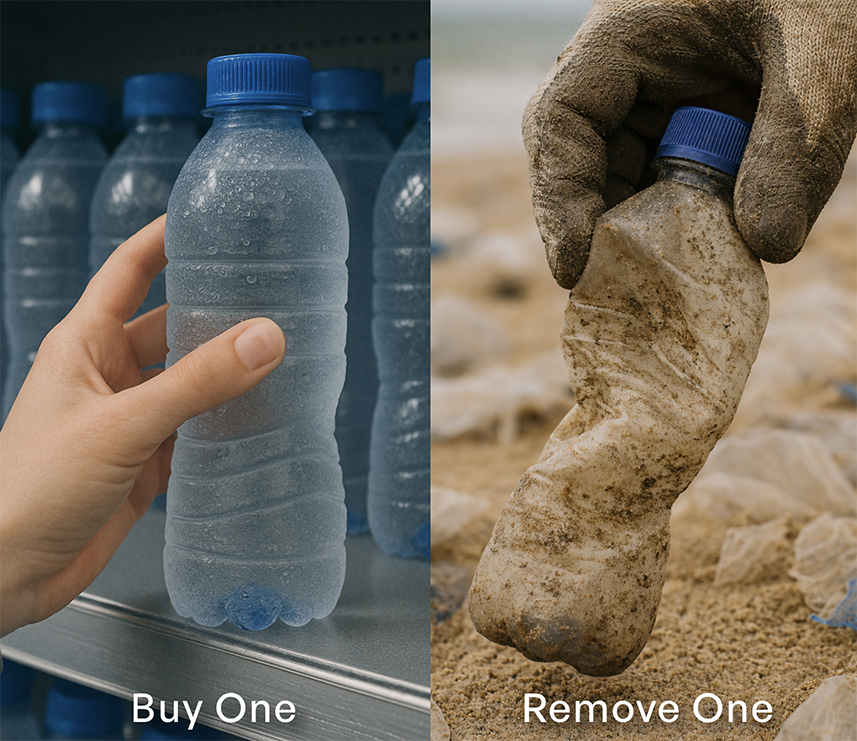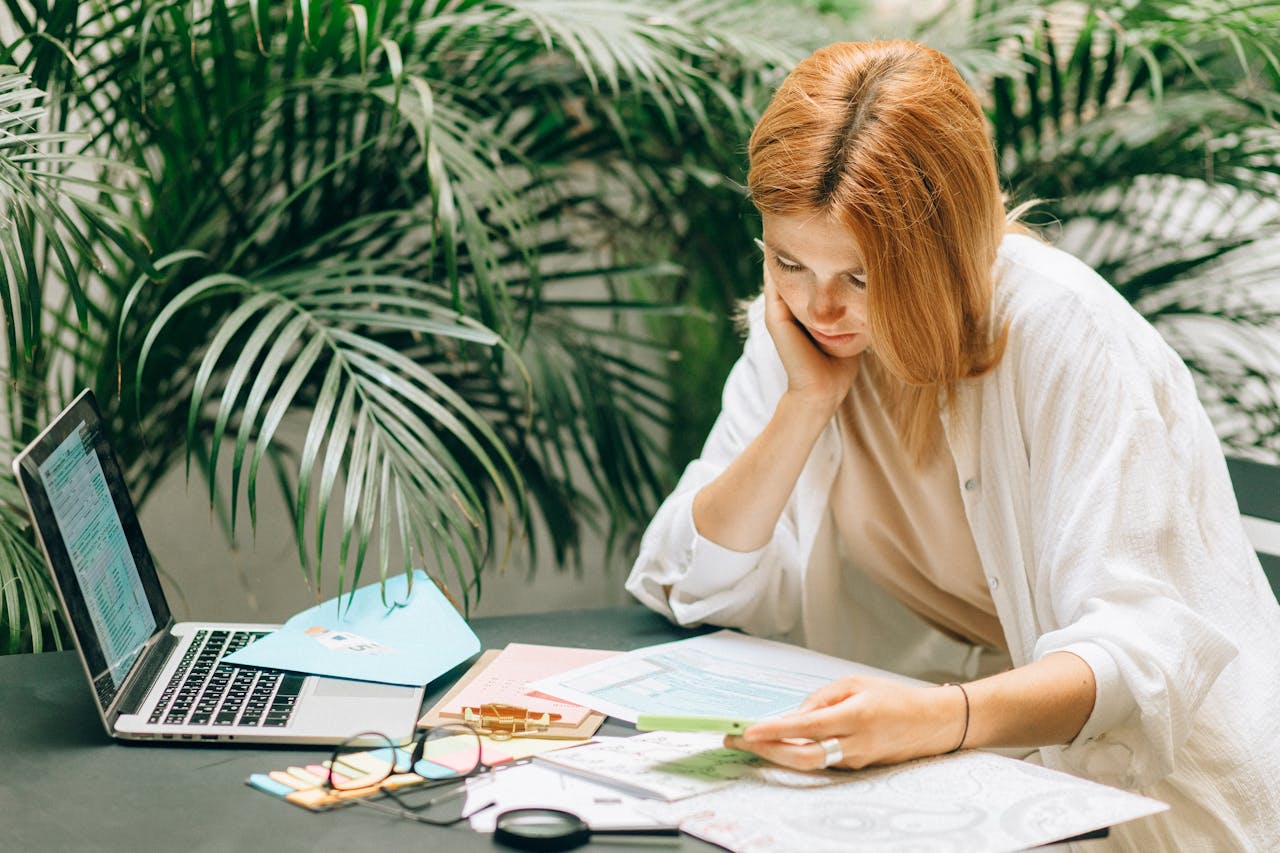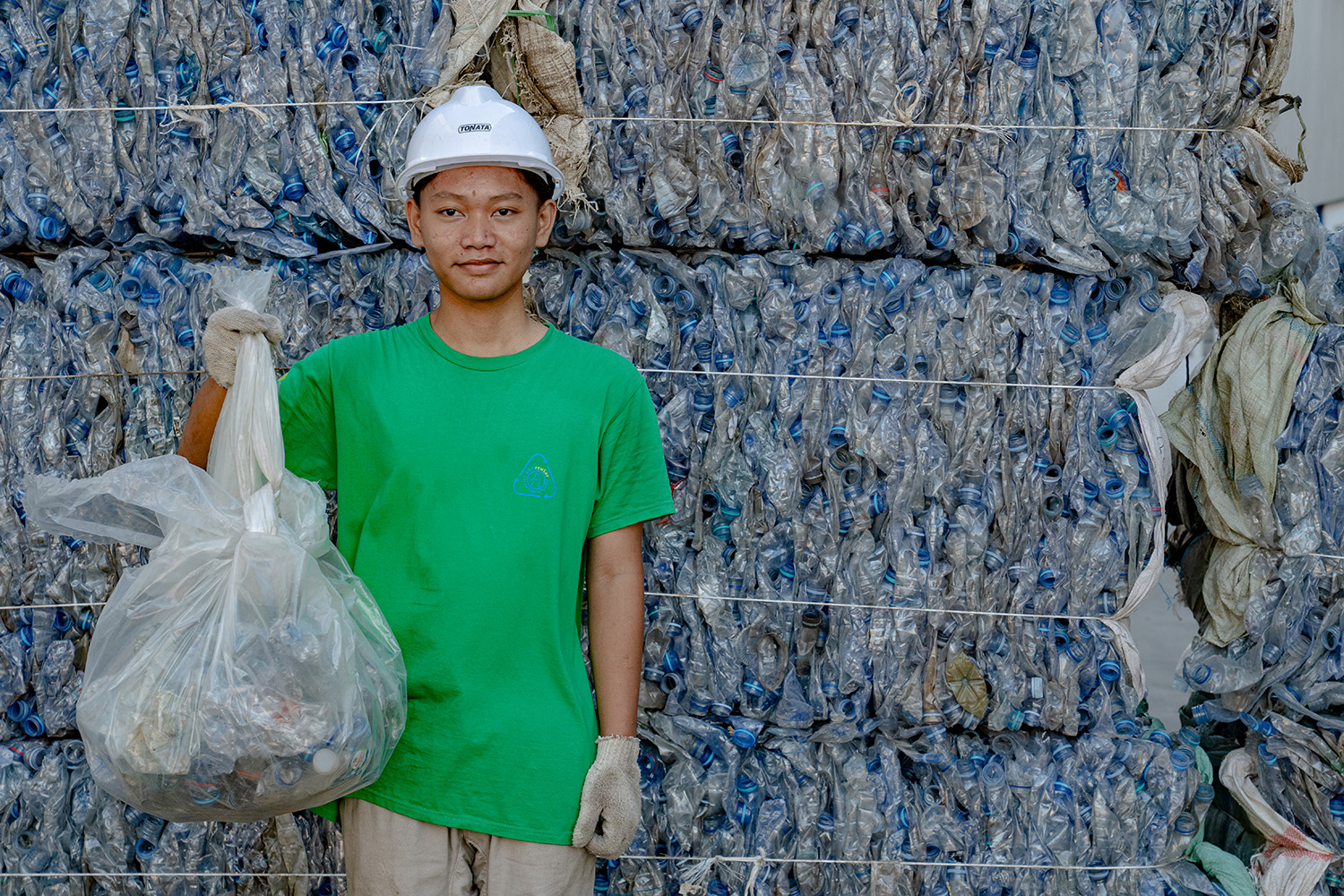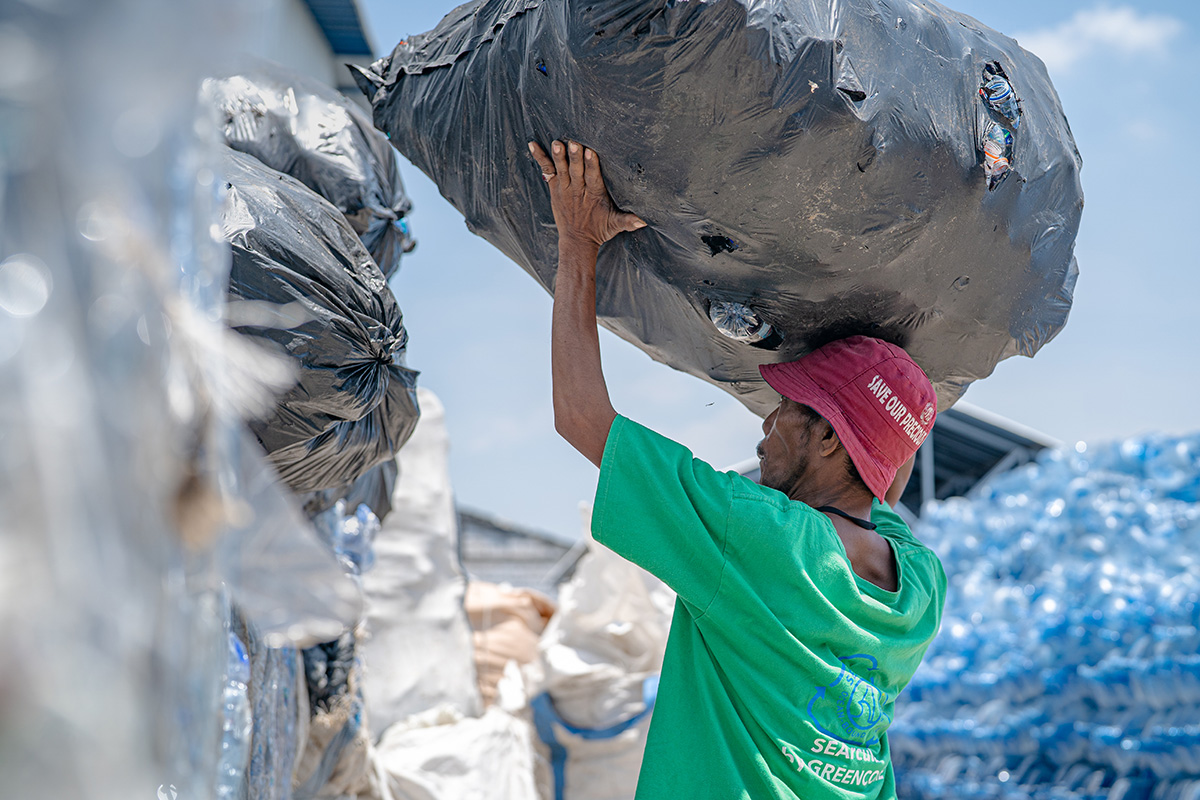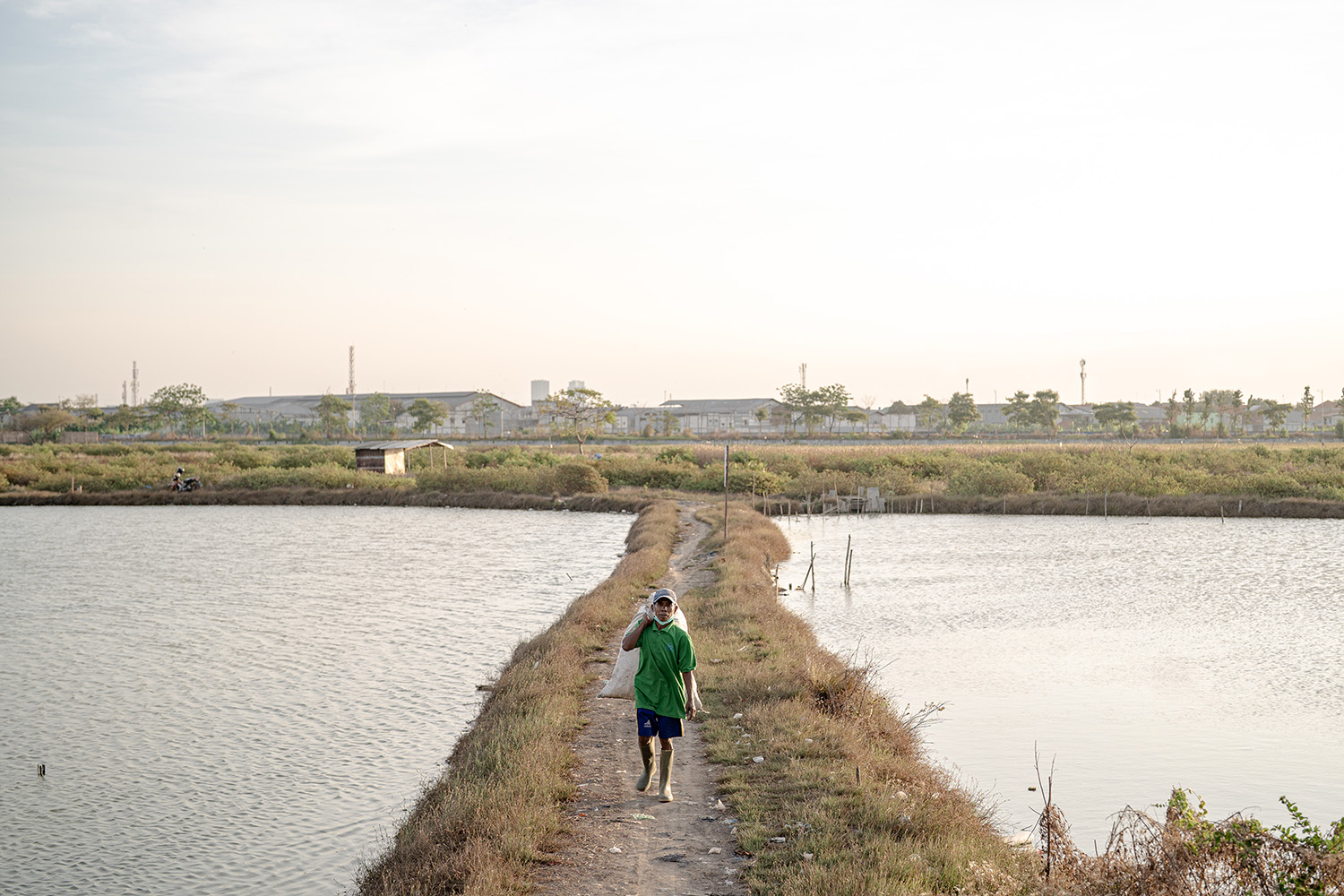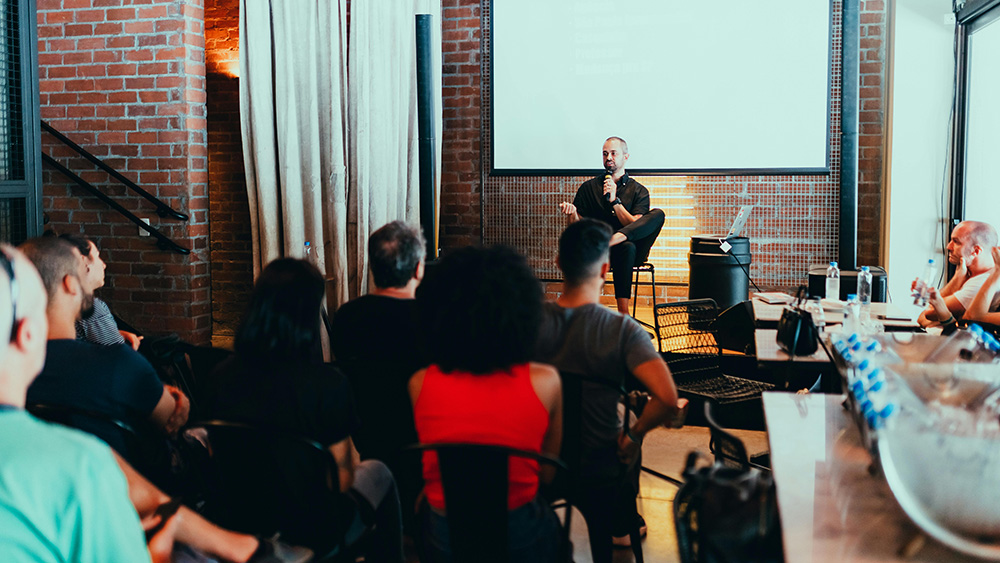Explore how Indigenous artists are turning ghost gear and marine debris into stories, livelihoods, and resistance, and how the Hunter Gatherer app is building a new kind of cultural marketplace.
Over the past 3 years we have been working with some amazing and inspiring indigenous rangers and artists who collect and transform marine debris and ghost net gear into stunning artworks. An Australian government program called Ghost Net Initiative, enabled the funding of 11 organisations to develop onground solutions to addressing the tide of plastic pollution washing ashore in Northern Australia and damaging ecosystems and wildlife. We were one of those organisations.
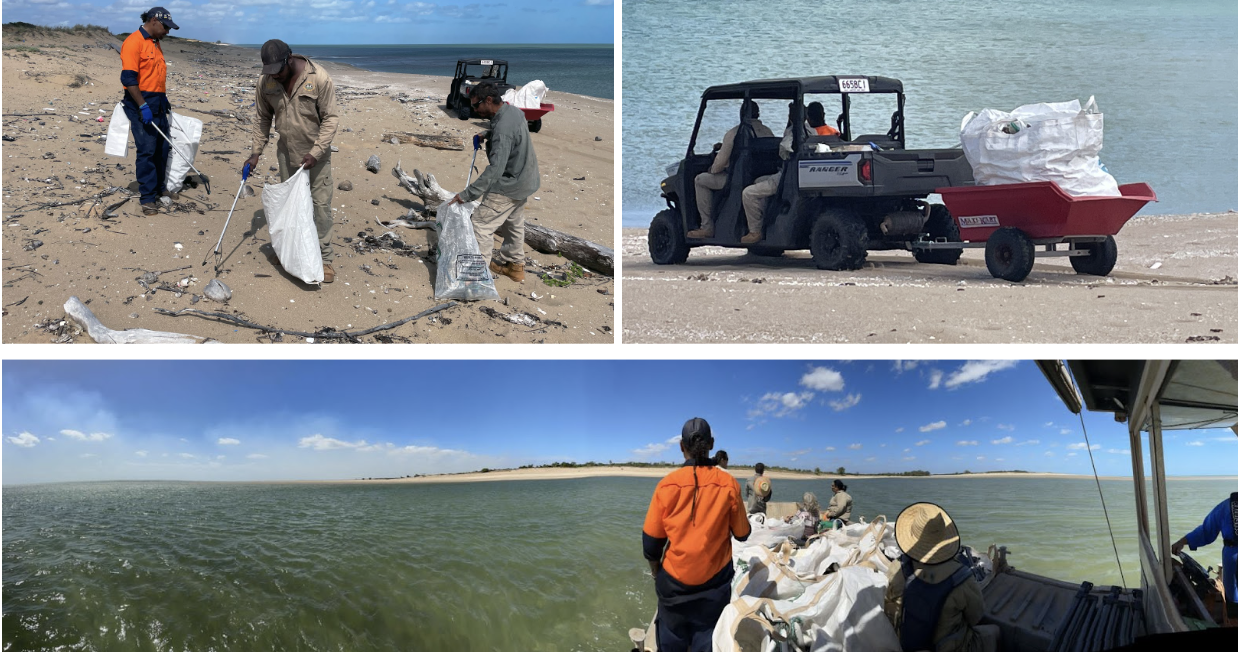
LAND & SEA RANGERS
In northern Australia there are hundreds of Land and Sea Ranger groups protecting and nurturing the environment and their communities. In the Gulf of Carpentaria where the ghost nets and marine debris loads are at their highest, 10 Ranger groups have located and removed over 2000 ghost nets (est.30 ton/ year) which otherwise would be silently killing the marine life.
It is a tragic reality that sea turtles and marine debris/ ghost gear follow the same currents, causing nets and ropes to continuously and silently drown and injure any marine life – hence the name ‘ghost’ gear. Endangered sea turtles such as the endemic flatback turtle (Natator depressus) rely on these remote beaches to lay their eggs and for their survival, are seriously impacted.
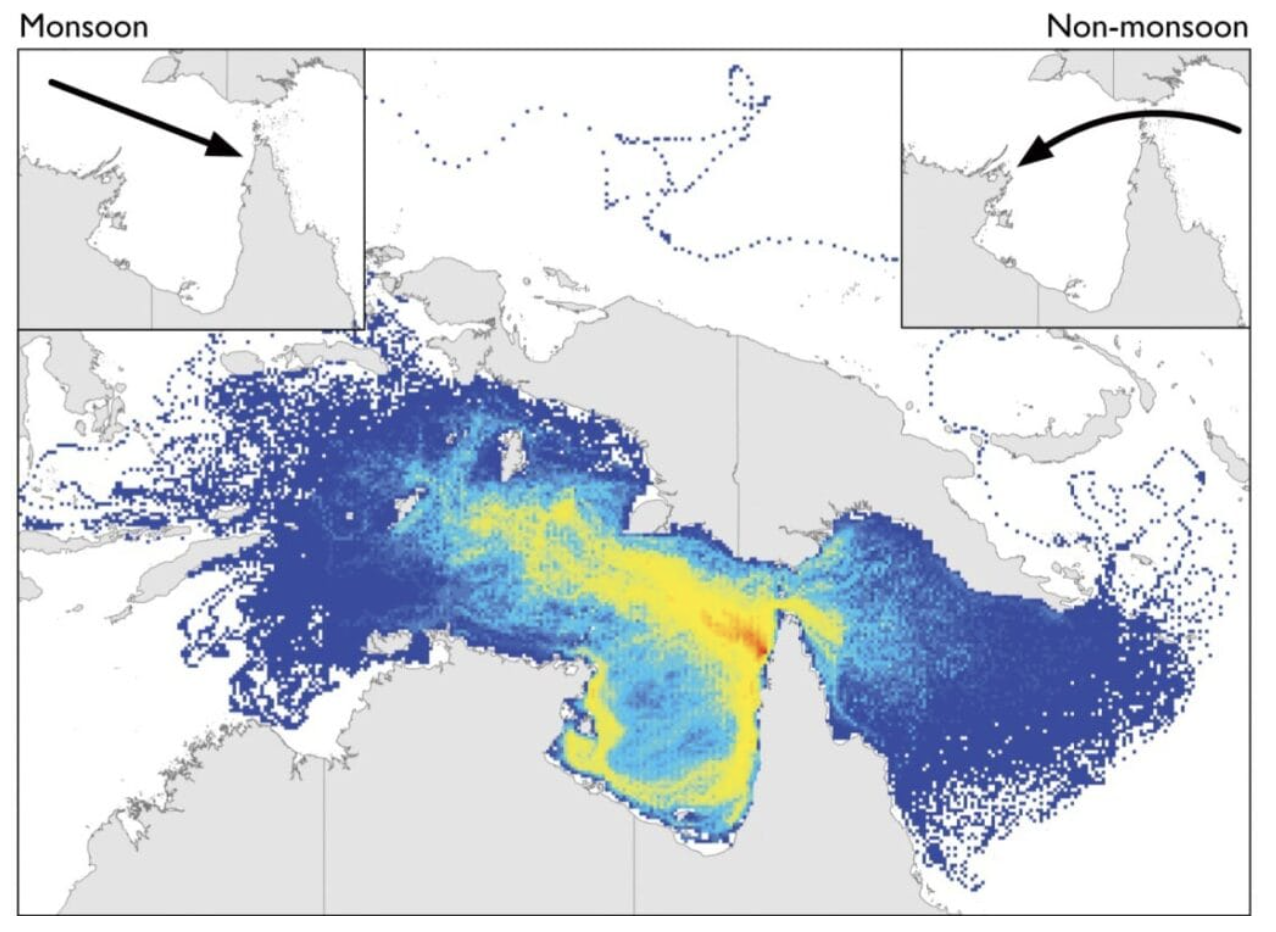
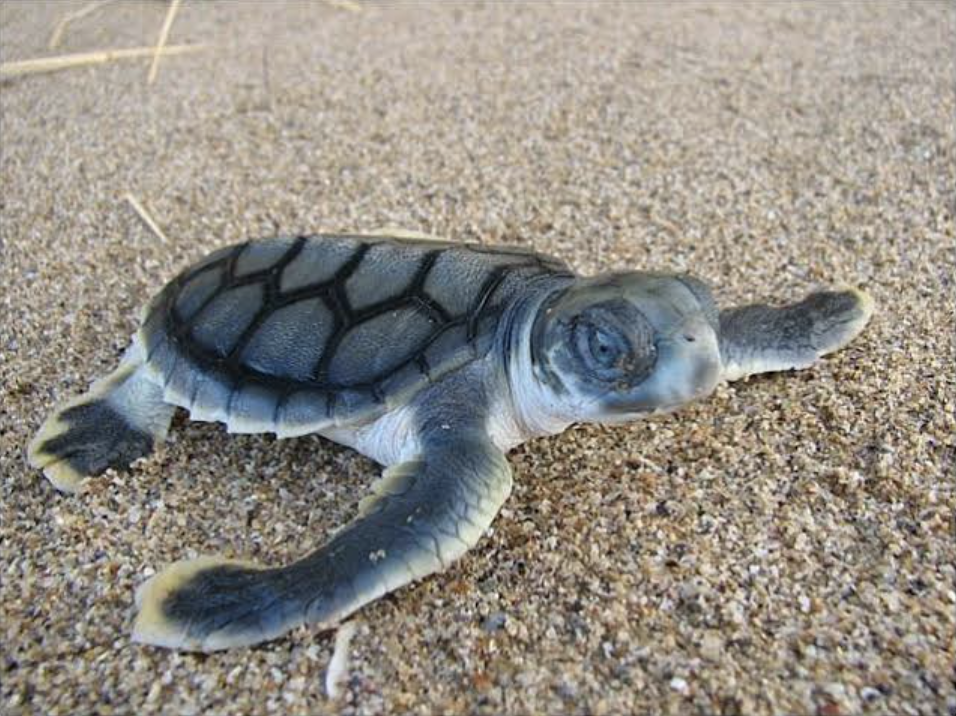
Indigenous Rangers play a vital part in protecting the sea and land. They conduct multiple Caring for Country activities including fire management, endangered species protection (marine turtle, sawfish and other conservation programs), feral species management, wetland/ mangrove monitoring and eco-tourism.
The logistics around conducting a cleanup on the coast for the Rangers is challenging. The typical cost of a 2 week cleanup along their coast is approximately $60,000. The cost of fuel, staff and hiring vital equipment to accessing the remote location may include a combination of 4wd utes to get close to the sites, beach buggies to access the long beaches, flat bottom sea barges to pick up marine debris bulk bags and a skip truck to collect all the tonnes of debris back at an access wharf.
Depending on how many people can come to the cleanups will determine the amount of material collected, with the Ranger groups varying in size between 4 – 20,. While the logistics for volunteer groups, such as Sea Shepherd Australia, Parley Australia and Tangaroa Blue supporting the Rangers work are extremely challenging – requiring transport to the site, camping, food, water and equipment.
After working with a number of dedicated indigenous ranger groups in the Gulf, including CLCAC (Burketown and Normanton), it was clear that Rangers are extremely busy with multiple responsibilities. Cleaning up the coastal areas required people and funding, which is an ongoing issue as the marine debris washes in every year from mostly foreign and illegal fishing,and communities overseas with no waste management. Our goal was to support these remote communities turn trash into valuable resources, changing the system from being a burden to an opportunity – we needed to find creative women who understood the problem.
CREATIVE WOMEN
Luanna de Jersey was working with Mapoon Rangers when we met, and together we started designing the program. After taking us on a beach cleanup with the Mapoon Rangers, Jocelyn (her sister and senior Ranger) showed us first hand the extreme density of marine debris on the coastal area between Mapoon and Weipa. There was over 3 tonnes of debris per kilometre!! That is 30kg per metre – hard to believe, but true.
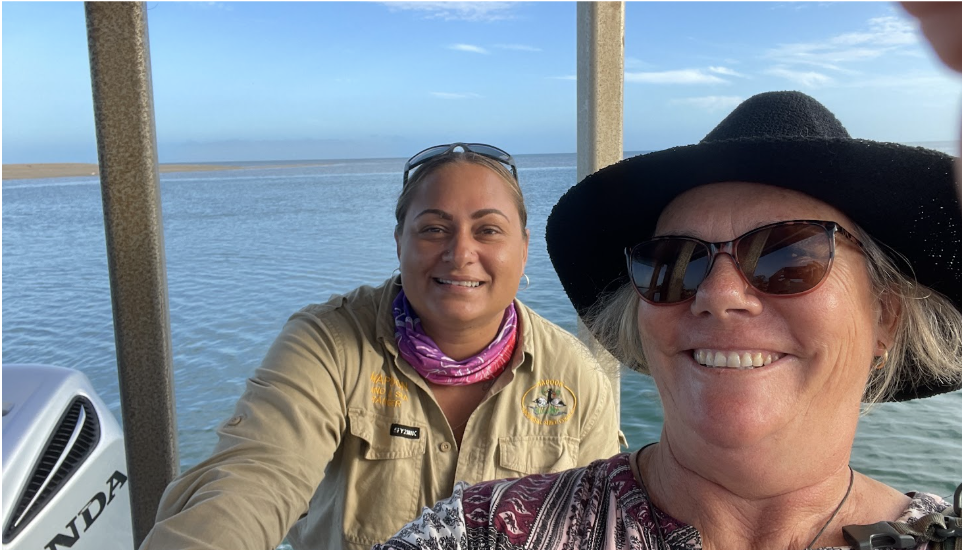
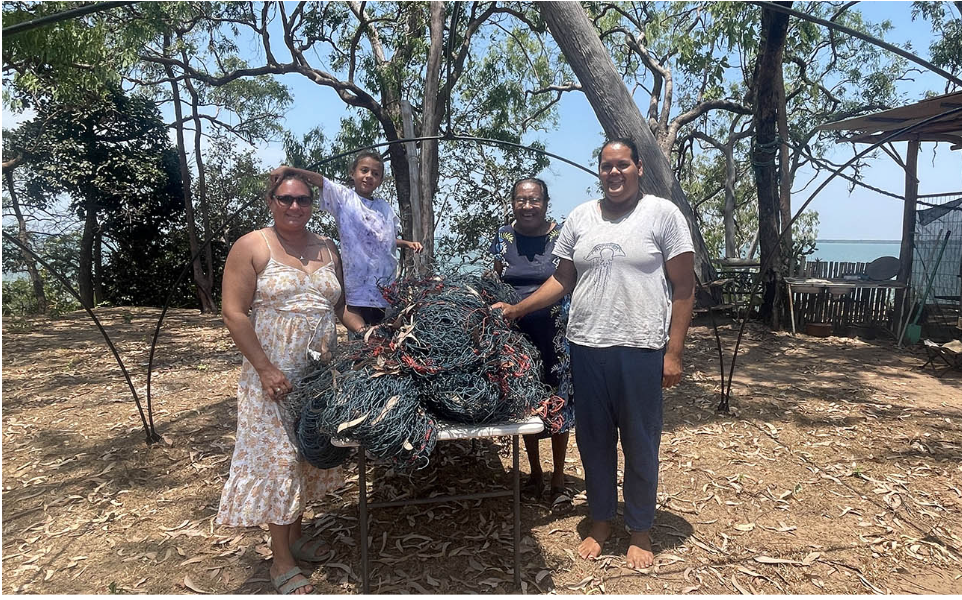
The De Jersey family from Mapoon, include a number of strong, talented women, whose art is incredible and their passion for their community and environment is admirable. The matriarch of the De Jersey, the first in her community to make ghost net sculptures was Zoe De Jersey. A kind, humble and warm woman, Zoe welcomed us to her home and showed us her art works and creative skills.
Zoe’s late husband, Stan (from New Caledonia) would make up the metal frames and bring home recovered nets from the local beaches. Zoe would then proceed to weave an animal that she knew so well, and had intimate knowledge of, including wetland birds.
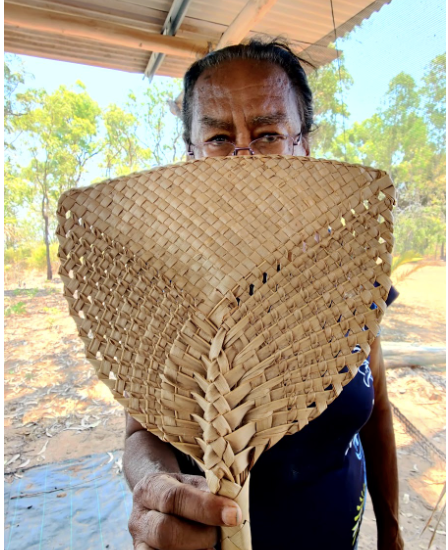
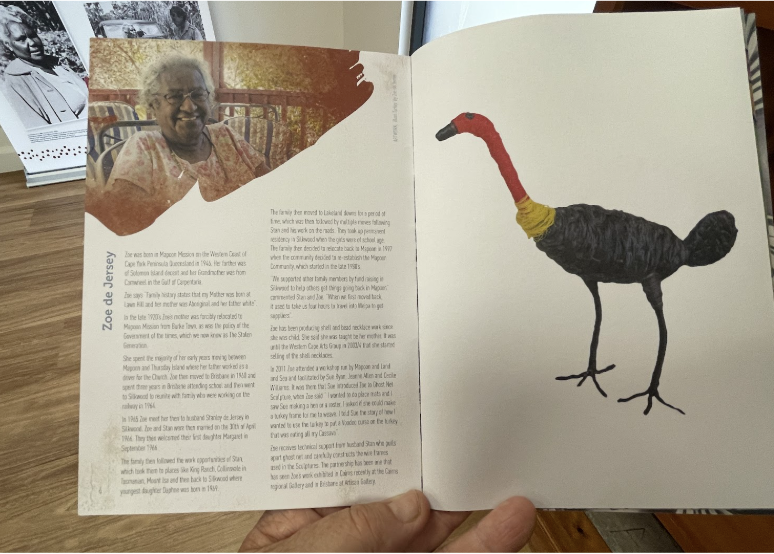
After sitting and listening with Zoe and her granddaughters; Lena (a talented young artist) and Luanna, we listened to their views on how to transform plastic pollution into valuable artworks. It was Luanna who came up with the name ‘Hunter Gatherer Mamas’ (later Networks), representing the ‘Hunters’ – rangers who clean up the beaches, and ‘Gatherers’ as predominantly women artists who sort and make the artworks.
While talking to the ghost net artists, including Zoe and her granddaughters, we wanted to know, what do they need to turn the trash into treasure. Their first request was an art centre where they could come together to do their art, as well as a marketplace for them to sell their artworks. Being remote can limit the exposure and opportunities to sell items, however most Indigenous communities attend the annual art fairs in Cairns and Darwin to sell art, however logistically it is a huge undertaking and planning endeavour.
Additional opportunities to learn different artistic processes for transforming a range of marine debris was another component the group were interested in. This would include exploring the tools and equipment required for working with the marine debris and ghost gear, and specialised training programs that could support these processes; collect – sort – prepare – make – market – sell.
After discussing ideas with Luanna and her family, we applied for the Ghost Net Initiative funding with Charles Sturt University, and were successful. A year later we started the project.
Our team consisted of project management; sisters Louise & Dianne Hardman (Plastic Collective), art creative director Jeremy Sheehan (Bay School of Arts) and software developers Ashish Budhthoki, Rachana Budhamagar and Anwaar Ulhaq (CSU).
KICK OFF
The first step in the project was to determine what type of marine debris washes up on the shore and how much could be collected in these communities? We found 12 types of materials which can be used for different projects, including nets, ropes, thongs, lighters, floats, foam and fishing gear.
The next step was to research global marine debris artworks and explore the possibilities. This included desktop research, as well as a two week trip to Cairns and Darwin to attend the amazing CIAF (Cairns Indigenous Art Fair) and DAAF (Darwin Aboriginal Art Fair). At CIAF and DAAF we met some amazing artists who have been working with ghost gear and marine debris.
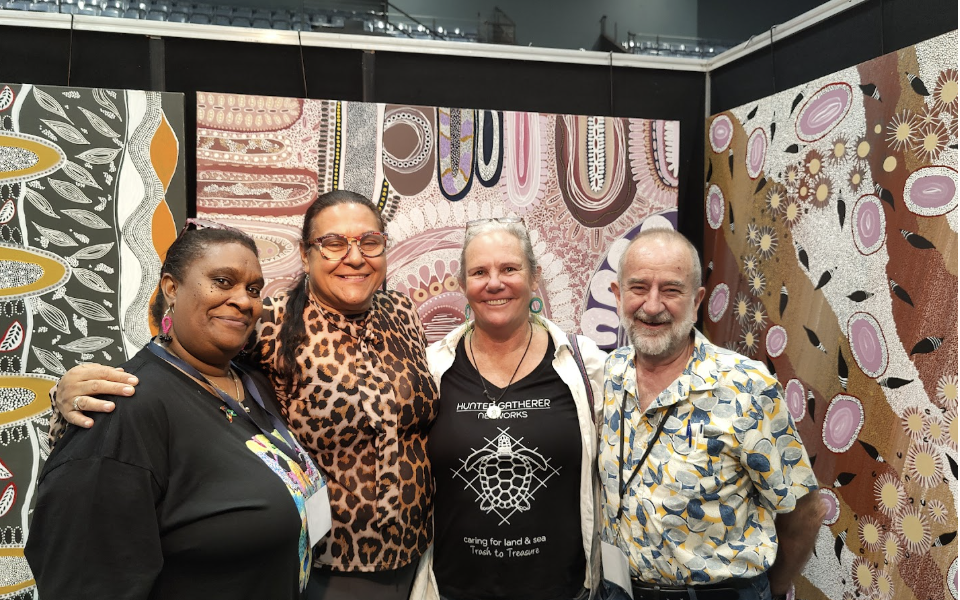
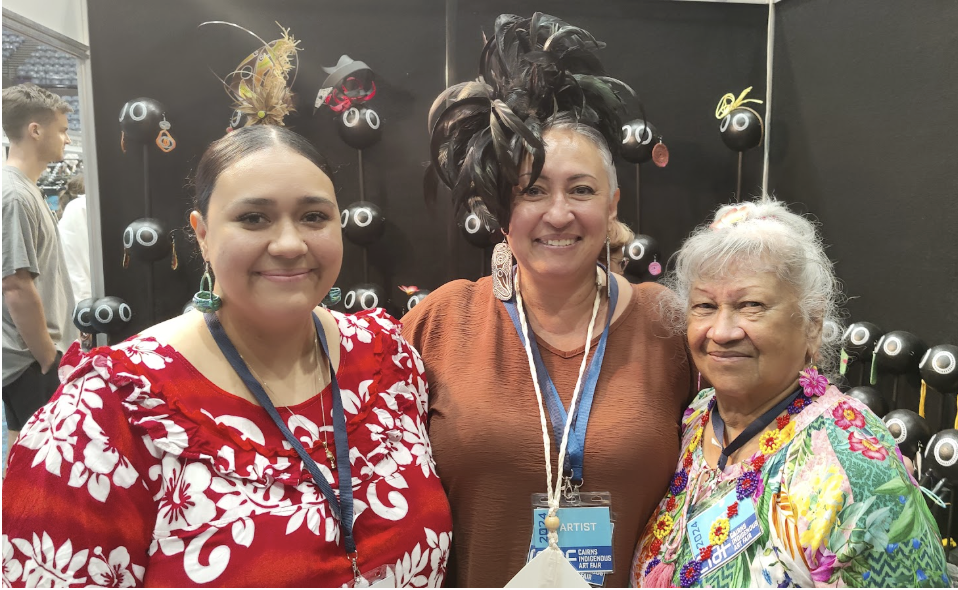
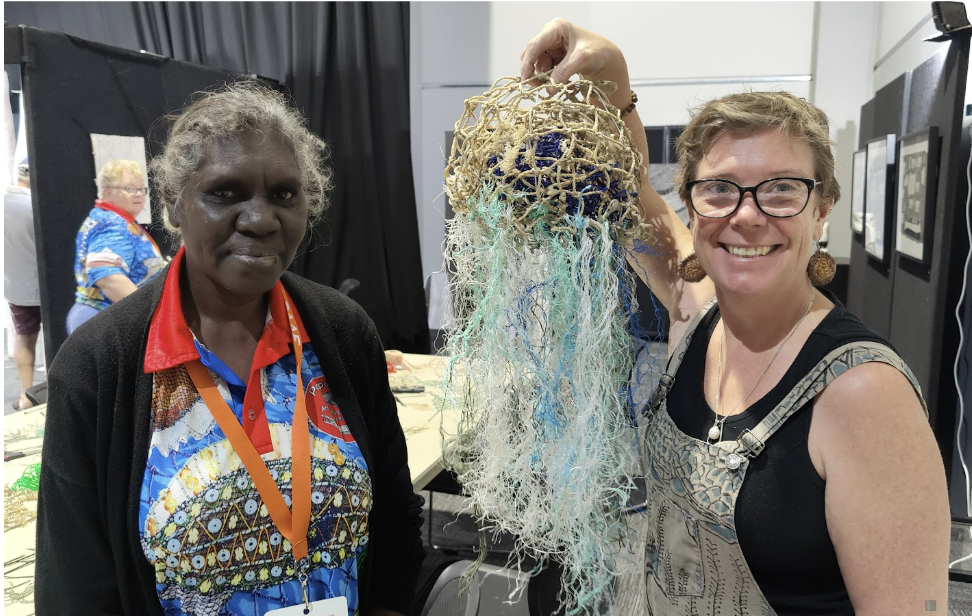
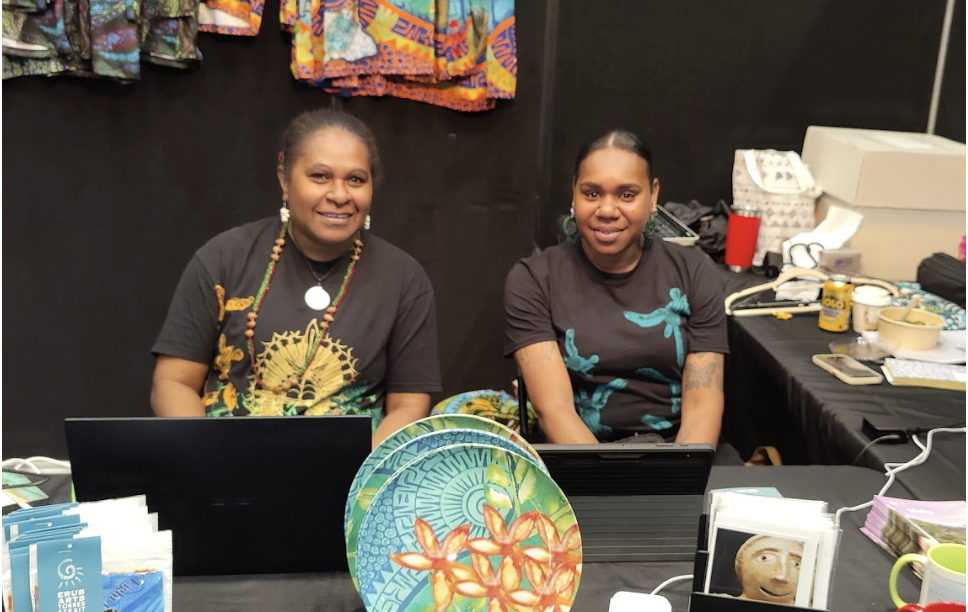
MATERIALS – MARINE DEBRIS/ GHOST GEAR
The categories of artwork that can be made from marine debris is quite astounding! Materials used in creative arts include fishing nets, ropes, fishing line, rubber thongs, bottle caps, beach glass, squid hooks, fishing floats and buoys, foam and lighters. Basically, with imagination nearly 90% of marine debris can be transformed into amazing artworks.
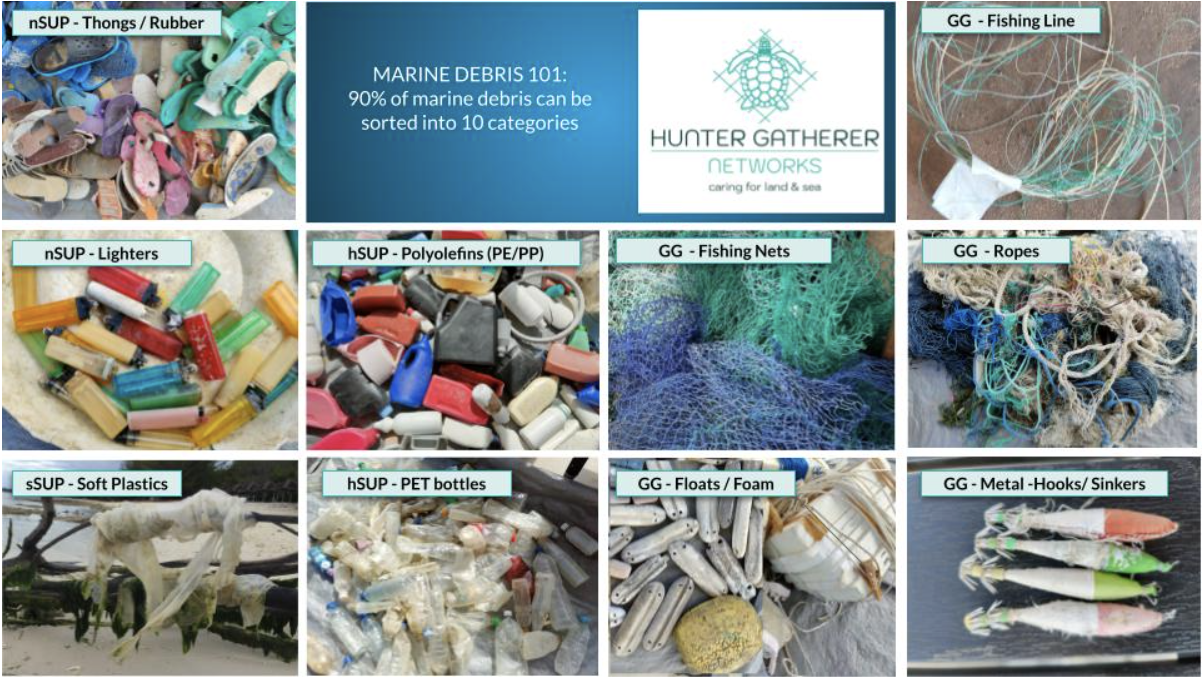
TOOLS & EQUIPMENT
As part of our project we provided tools and equipment to the art groups from northern Australia to enable them to make artworks from the marine debris and ghost gear materials recovered from local beach cleanups.
The kits went to WeiNum Arts, Numbulwar Numburindi Arts (NT), Torres Strait art groups – Gab Titui Cultural Centre, Badu Arts, Erub Arts and Moa Arts, as well as the Tiwi Islands – Pickamoor College (Melville Island) and Red Cross (Bathurst Is).
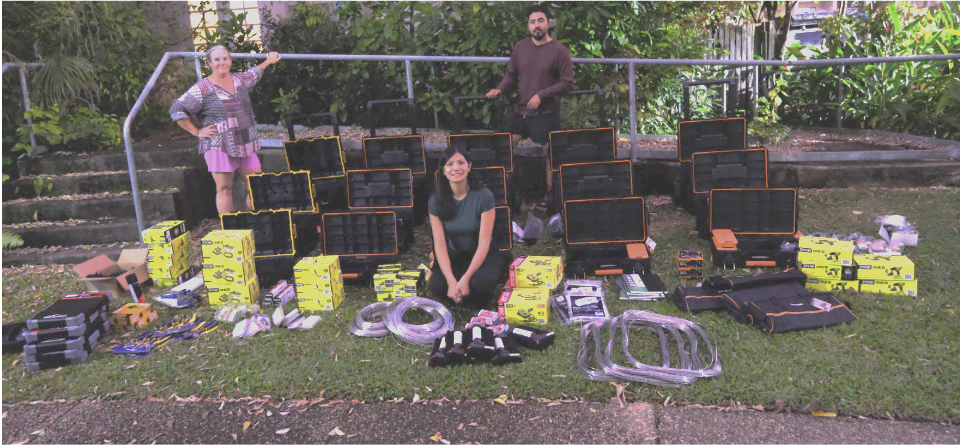
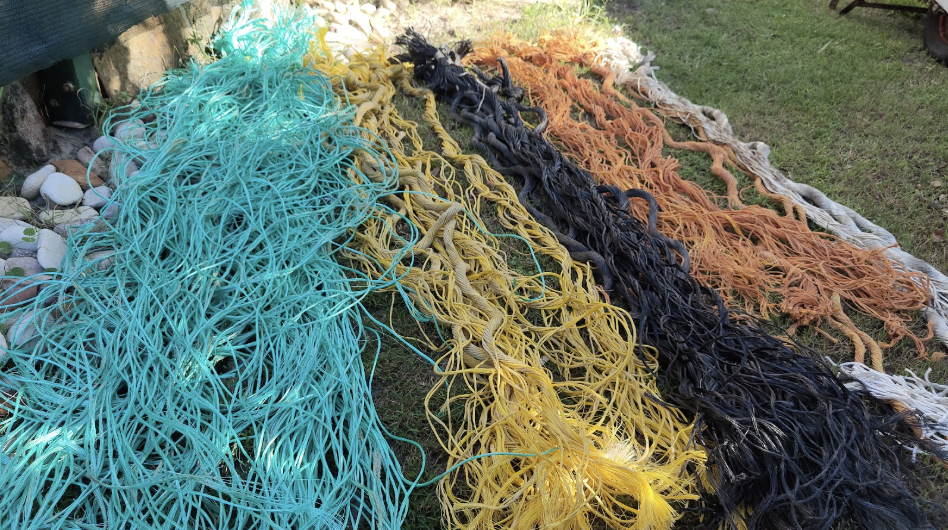
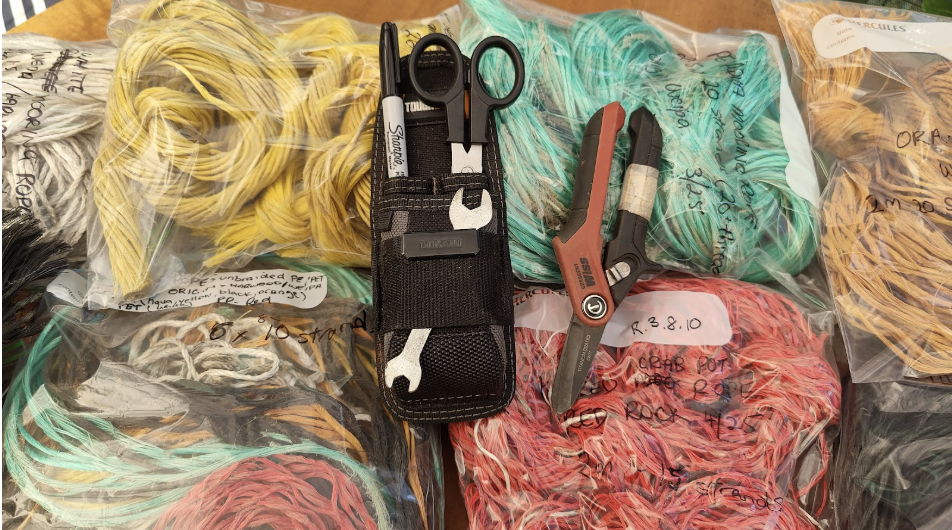
WORKSHOPS
Workshops were a vital component to enable the artists to develop additional skills in marine debris and ghost gear transformation. Workshops were delivered in Mapoon, Tiwi Islands, Yirrkala (Arnhem Land) and the Torres Strait Islands. Our workshops covered sorting of materials, preparation and storage, designing and conceptualising a project, and making. ‘Making’ was further broken into a range of techniques using a variety of materials, hand and power tools.
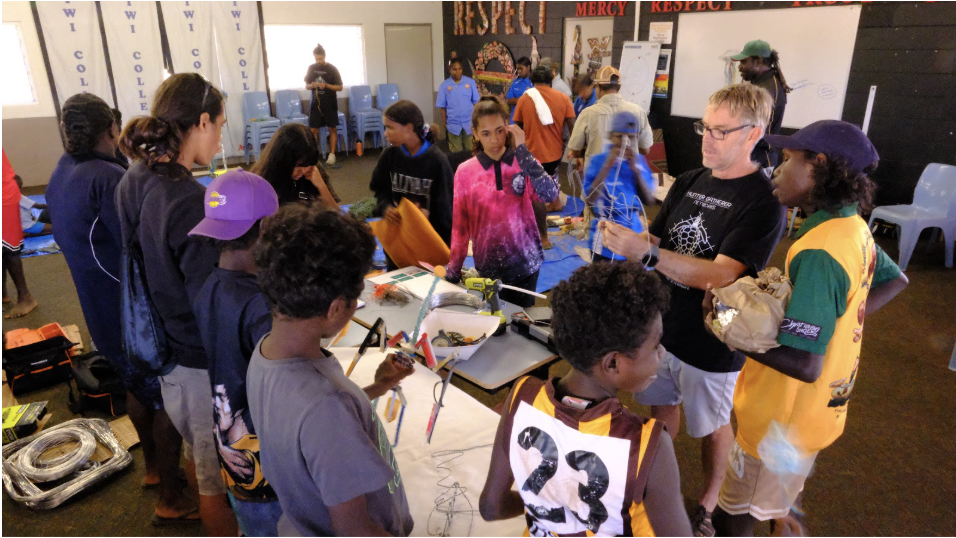
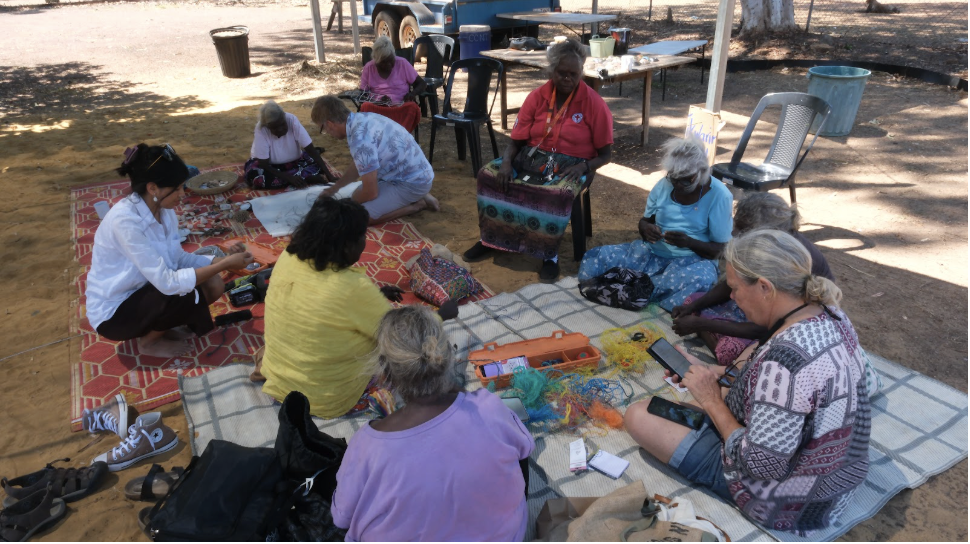
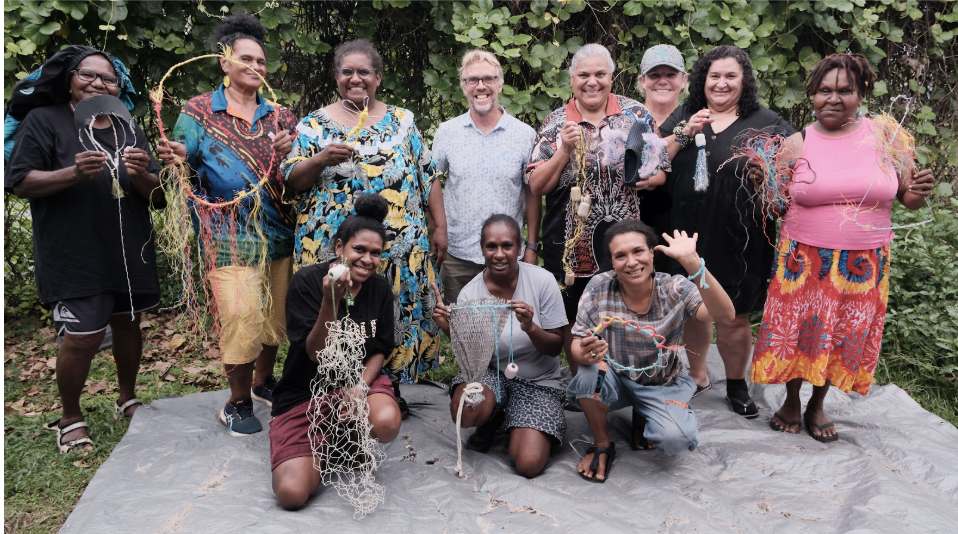
INSPIRATIONAL ARTISTS
Creative ghost net sculptures has been developing in northern Australia since 2009, inspired by the incredible artists including Sue Ryan (Ghost Net Art), Lynette Griffith & Marion Gamers (Ghost Net Collective), Zoe De Jersey (Mapoon), Jimmy Thaiday, Lavinia Ketchell & Florence Gutchen (Erub Arts) , Pormpuraaw Artists (Pormpuraaw Arts) and Numbulwar Numburindi Arts, and others.
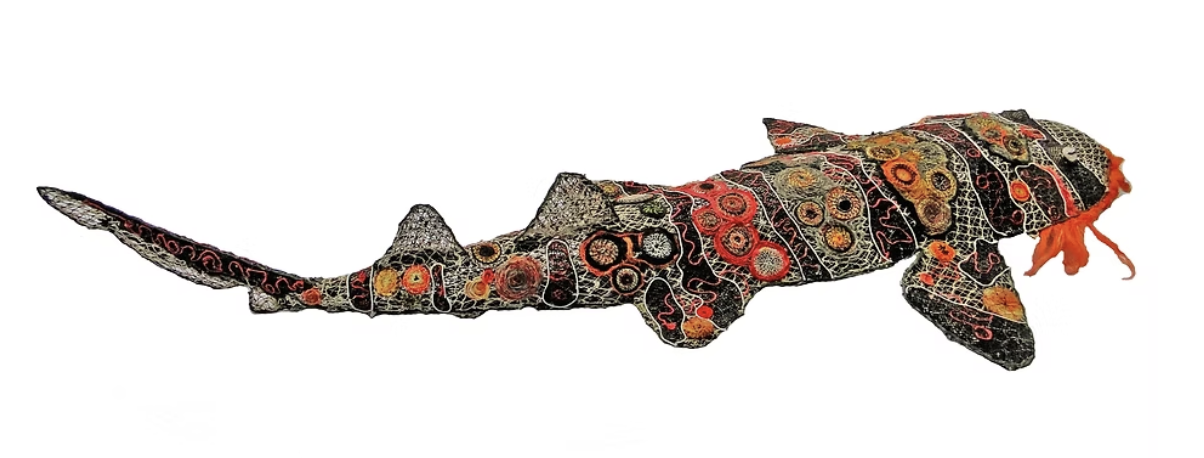
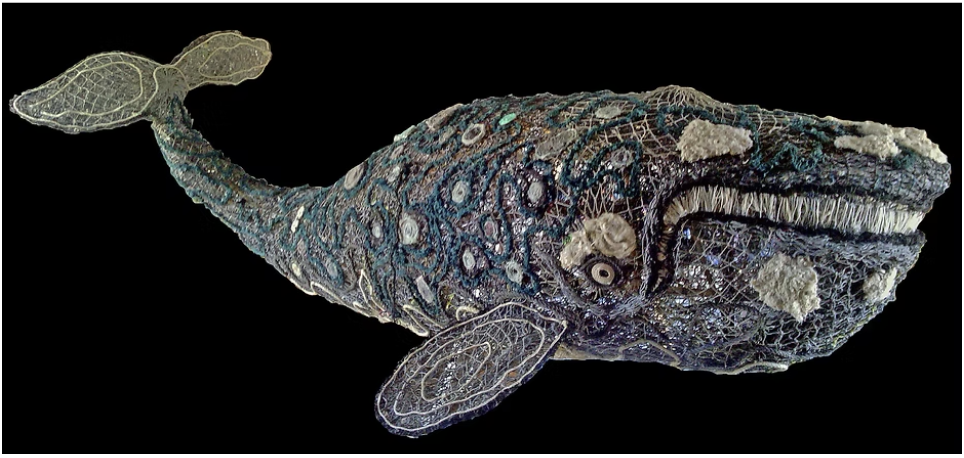
The World Wearable Arts was won by Lynette Griffiths and Marion Gamers (Ghost Net Collective, Cairns). Their work has featured in a number of high profile locations, including Burranagoo, Darling Harbour, Australian Institute of Marine Science.
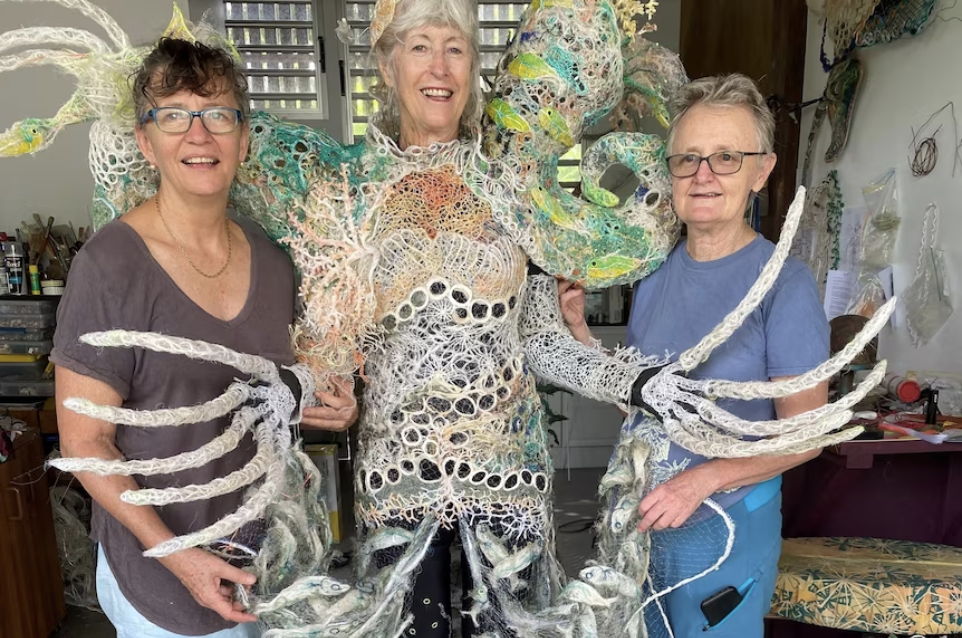
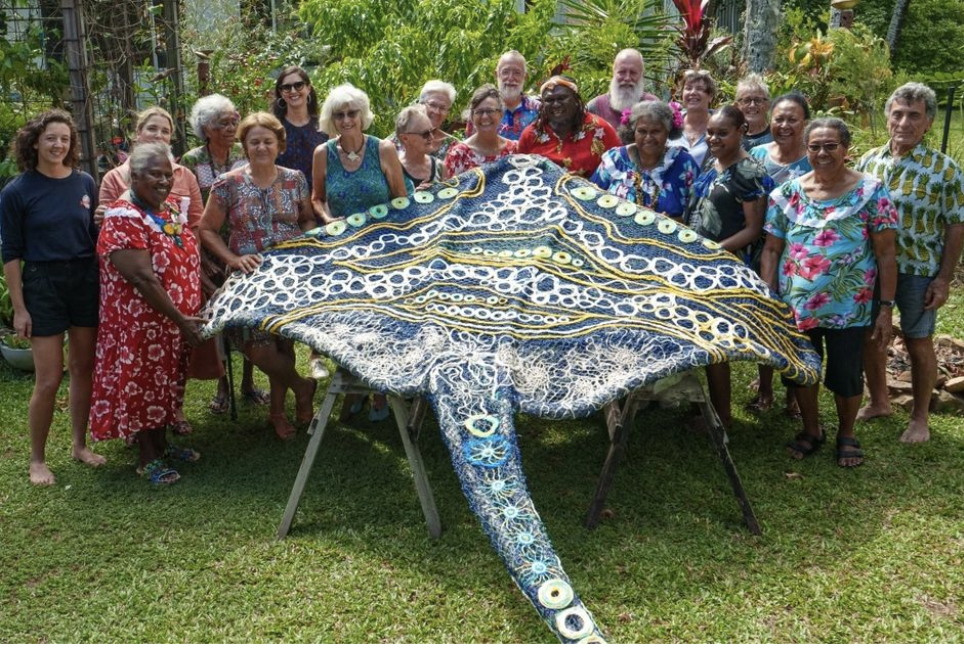
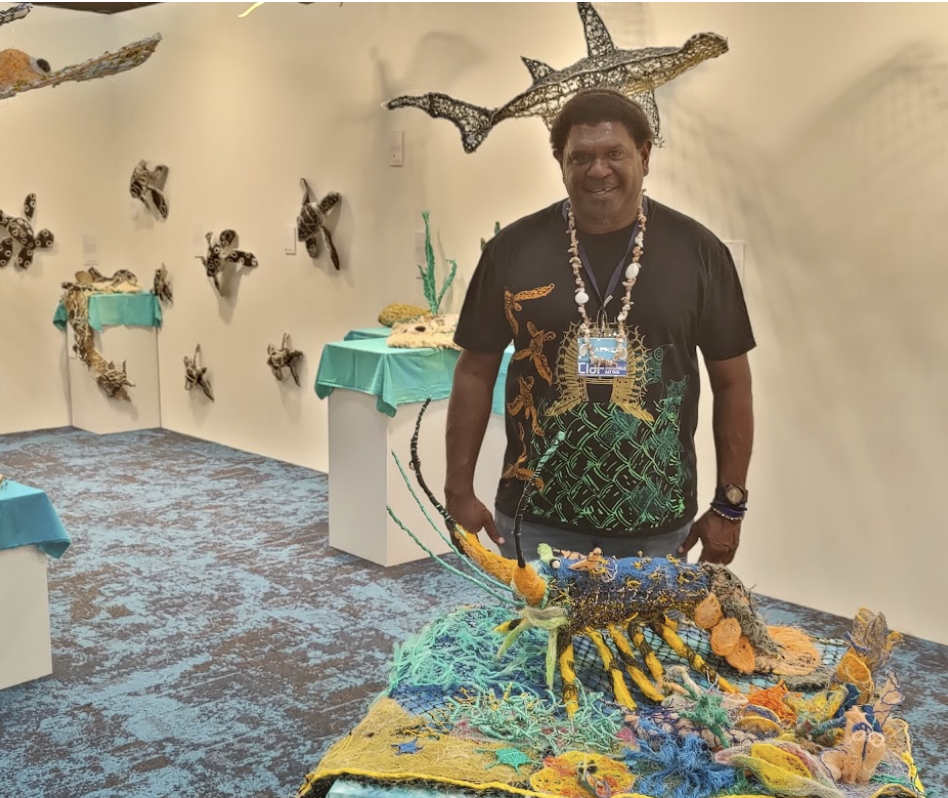
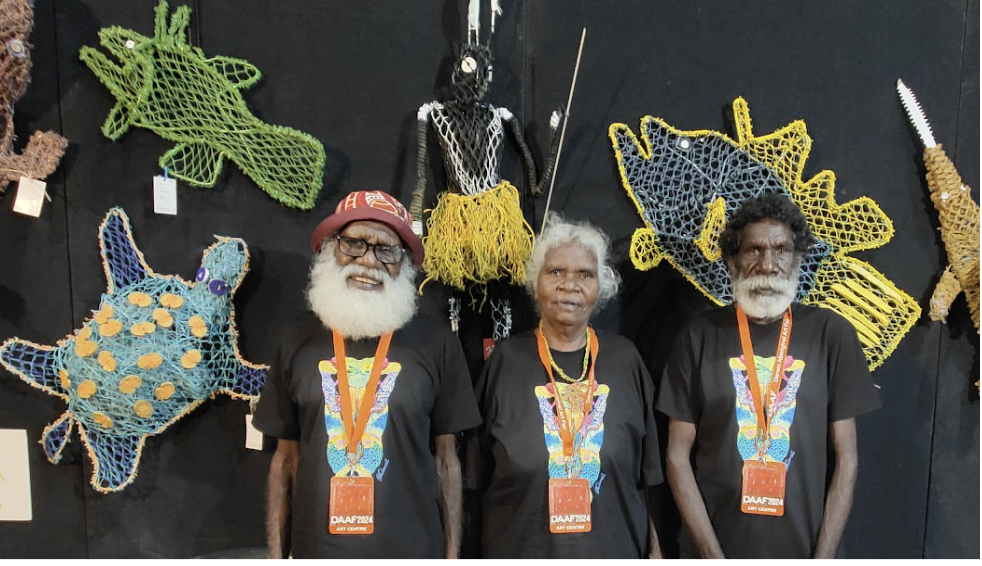
In addition to ghost net art, we also engaged with groups including Ocean sole, Nairobi, Kenya, who provided advice and support to enable communities to transform rubber thongs (flip-flops) into works of art
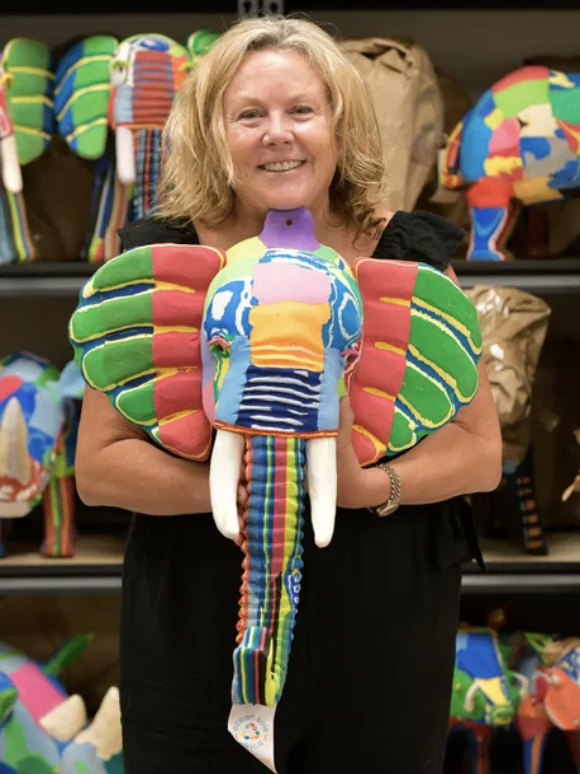
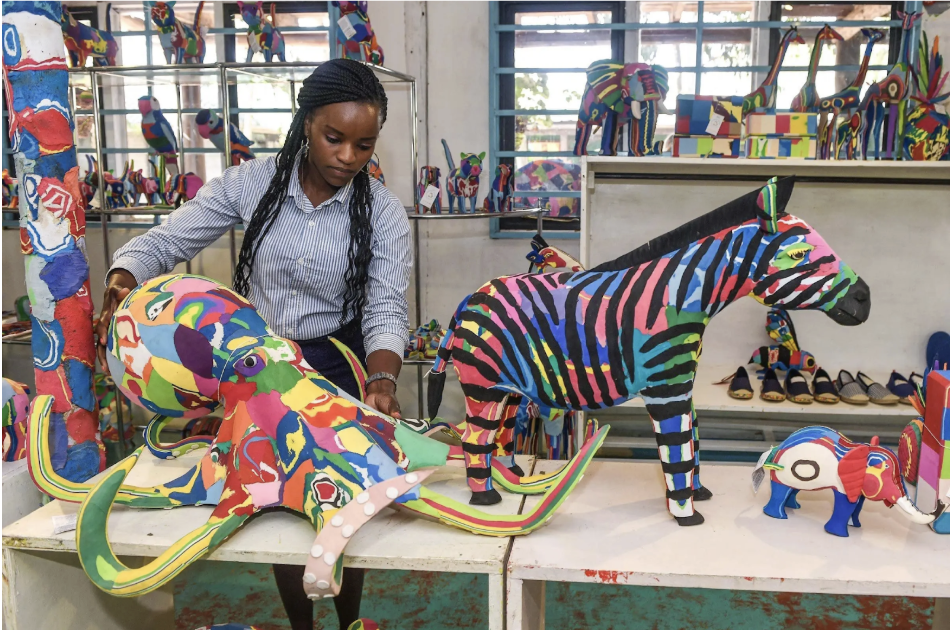
The skills remote community artists have in weaving and making things is exceptional. While at the CIAF event, Daphne (De Jersey) asked for a piece of old rope I had found on Seisa beach, tip of Cape York (top of Australia). After a short time, Daphne handed me these delicate colourful earrings.
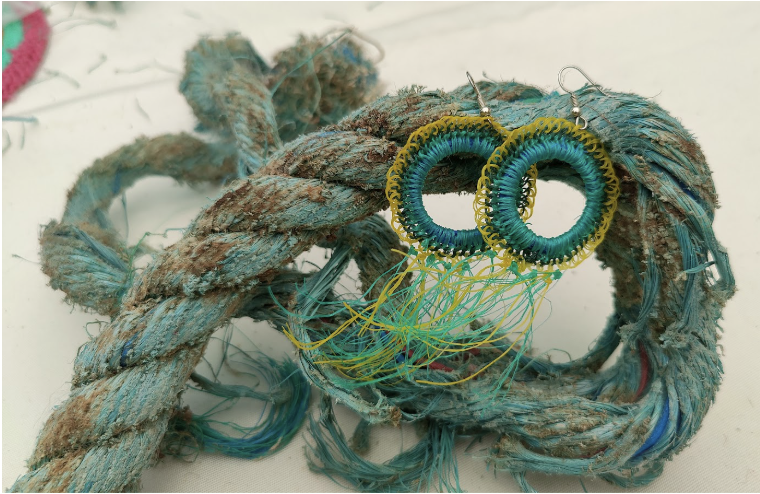
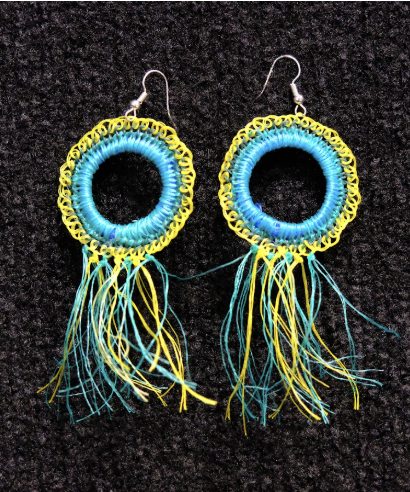
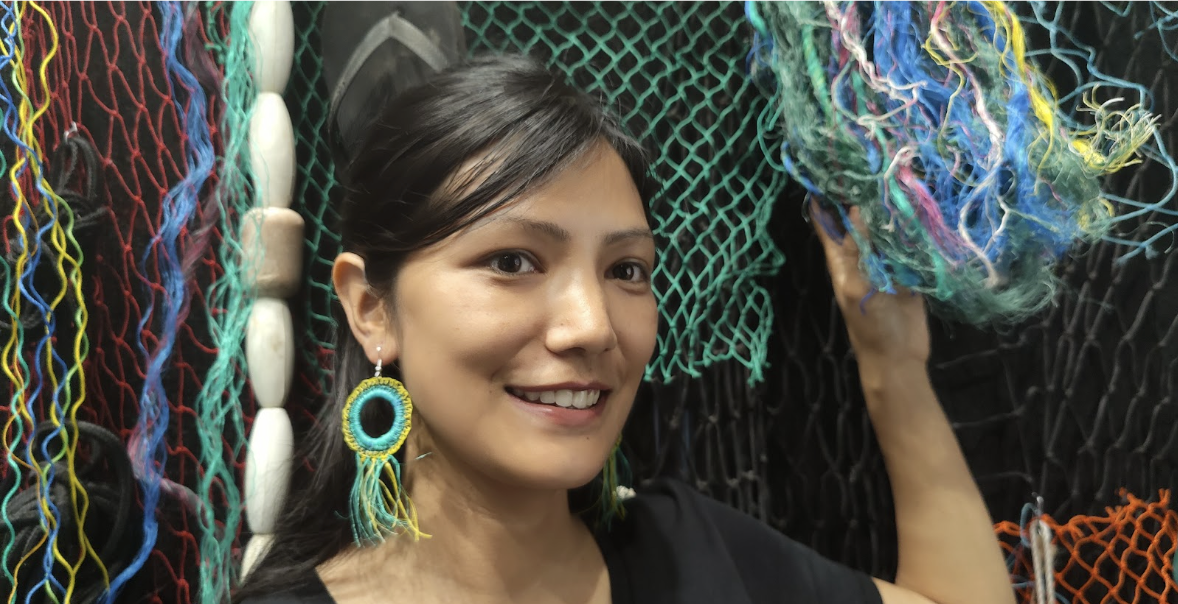
There was no limit to the imaginations of these groups, each one telling a unique story of their home, the impact on their communities and environment and their desire to share it with the world.
ONLINE MARKETPLACE
A common issue for many remote community artists is the high cost of transportation. Being able to get their products to market is a significant effort, with many preparing 6 months in advance for the Cairns and Darwin art fairs to sell their works.
As part of our Hunter Gatherer Network project, we wanted to develop an online marketplace portal for communities to access which would enable them to sell not only their artworks and organised commissions, but they could also sell the raw sorted materials, such as floats, ropes, nets, etc.
Two software developers were engaged as part of the program, one through Charles Sturt Uni (Ashish) and the other through Plastic Collective (Rachana). Together they developed the online platform that had 3 components across both iphone and android platforms. The four components included 1. Location tracking of materials collected from cleanups to sorting stations, 2. A sorting inventory for the recycling / art centres, and 3. A safe and secure marketplace for buyers and sellers to trade materials and artworks. Plus an online learning platform which will be expanded to include circular economy and resource recovery education and training.
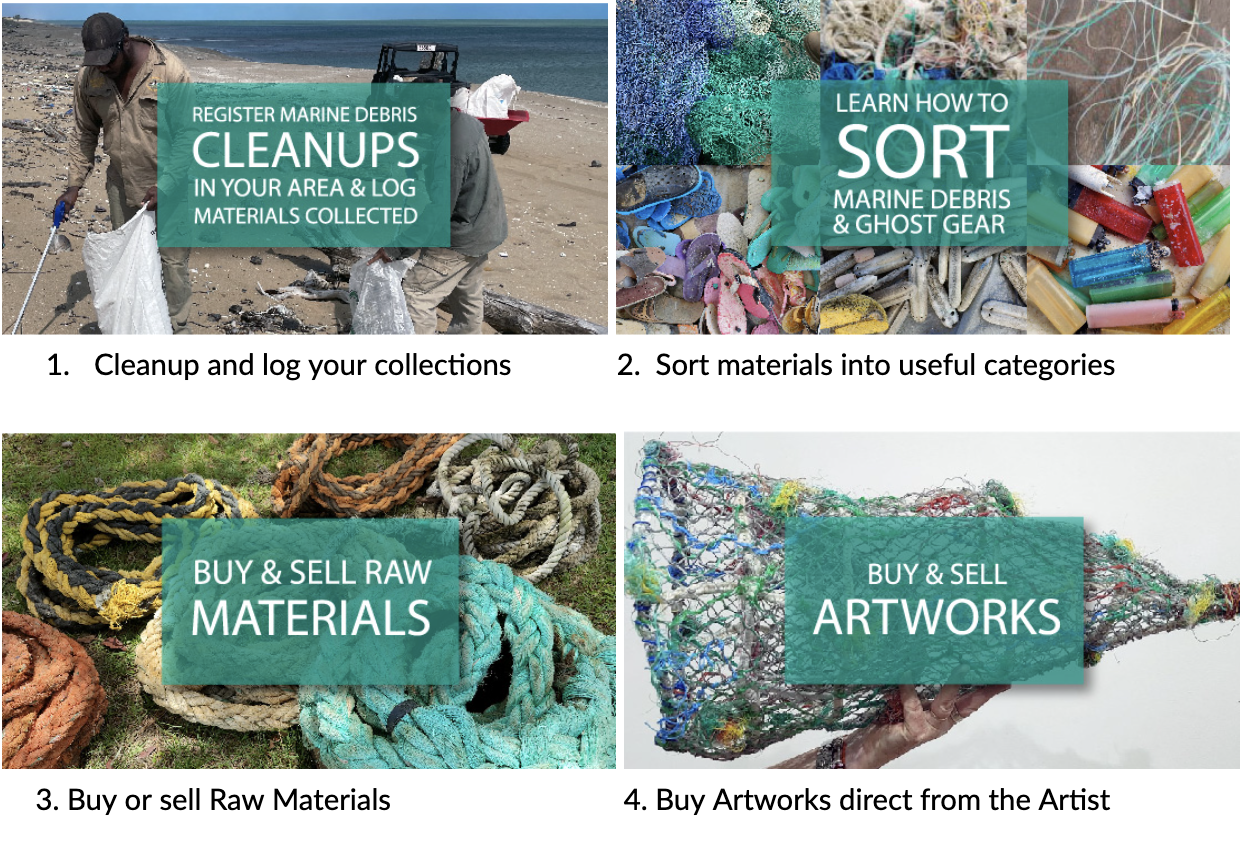
The App was developed over the past 2 years and launched in June, 2025. It can be downloaded for phone or computer through istore (iphone) or android google play. PC takes no commission from the artist, with 100% of profits going back to the communities, and follows the National Aboriginal Design Agency (NADA) guidelines.
Plastic Collective will continue to develop educational and training programs, delivering workshops onsite and supporting communities online. We are dedicated to keeping plastics out of the oceans and supporting the true heroes that keep our coastal communities clean, Rangers, artists and volunteers who strive for clean oceans.
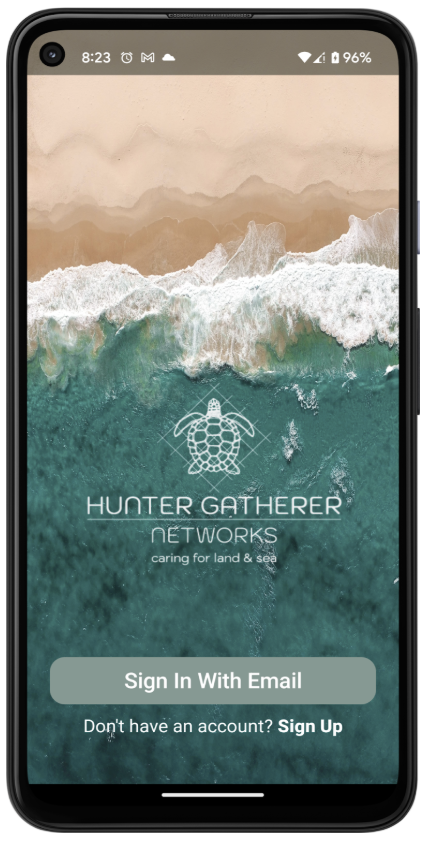
To learn more contact us at;
Email: support@huntergatherer.net.au
Or check our website: https://www.huntergatherer.net.au/
